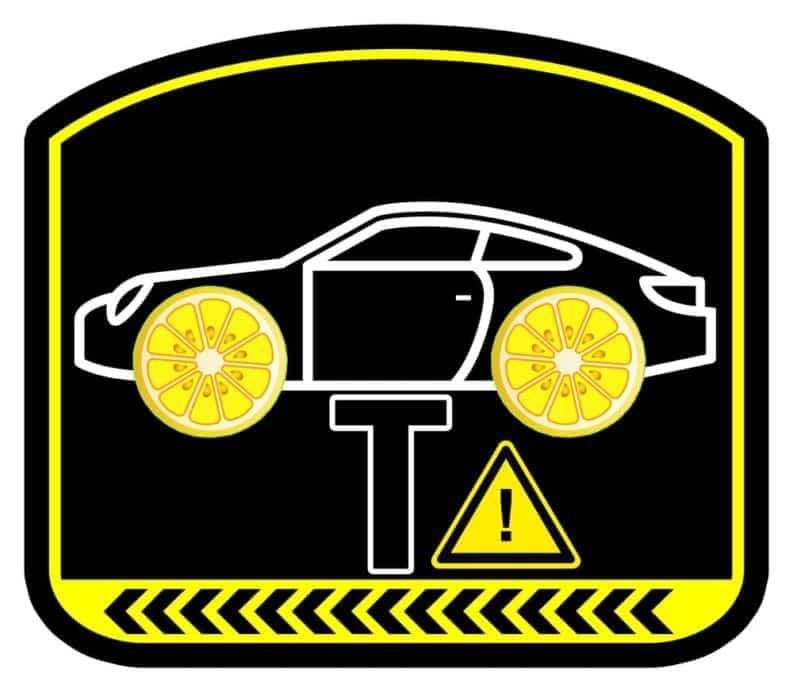When shopping at a used car dealer, the threat of stumbling on a dealership that has a lemon car (or five) lurking in the shadows is real. What’s a lemon? For those who don’t know, a lemon is a car that can be new or used, and has a substantial defect that the manufacturer is trying to hide. That’s the definition in a nutshell, and it means you have to do your due diligence when it comes to finding a good used car. Along with buying a used car the right way (inspecting it, test driving it, etc), here are three other tricks you can use in order to avoid buying a lemon car.
Vehicle History Reports Really Help
While you should always check a Vehicle History Report and VIN number before buying any vehicle, you’d be surprised how often this step in the overall car buying process has fallen through the cracks. So, let’s give you another reason to do it: it can help you avoid getting tangled up with a lemon in the first place.
Since a lot of lemon cars have had an accident or two (or were made with a defect the manufacturer decided not to fix) it’s imperative you check the vehicle history report. This report shows vital information about the history of that used car, such as salvage and insurance loss records, accident records, and title records from each state’s DMV. With one quick look at this document, you can see where the car has been previously, and if it’s been in any accidents at all. Both things which an unscrupulous dealer might try to hide.
CarFax is a quick and easy way to get a vehicle history report. You’ll also want to make sure the car has a clean title. Simply ask the dealer to see the title after you’ve run a vehicle history report and everything checks out.
Window Stickers Are Your Friends; Read Them
No, I’m not talking about the big sticker on the windshield with the price on it and the words FOR SALE in neon font. I’m talking about the window sticker (Buyer’s Guide) that’s typically attached to a window. Can’t find one? Then run (don’t walk) away from the dealership. Why? The Federal Trade Commission (FTC) requires dealers to put one of these on a used vehicle they’re selling.
This Buyer’s Guide is also required to contain certain information, including if the vehicle is being sold in “as is” condition, with a warranty, and the percentage the dealership needs to pay in order to cover repair costs. Essentially, it’s a way to counter last minute changes in the sales contract, and ensure that you understand what you’re getting into. For example, if the Buyer’s Guide states the car has a warranty, the dealership must honor that.
How does this help shoppers identify a lemon? Well, that “as is” tag means that when you buy it, you’re on your own. The dealership won’t need to assume responsibility for any problems that arise (even if those problems are not your fault, and the dealership hid them from you) and you will be on the hook for the repair.
This isn’t always a sure sign of a lemon, but the fact that many states don’t allow “as is” sales on vehicles selling for more than a certain price should tell you something.
Pay Attention to the Finer Details
When you’re doing your regular inspection, don’t just go straight to looking under the car and under the hood. By all means, make sure to check those areas. They’re key to ensuring you’re getting a good vehicle. But, you need to pay attention to the finer details as well.
These finer details are both on the outside and inside of the vehicle. You need to make sure you’re looking out for things like mismatched parts, off-colored paint, covered-up bondo, chipped paint, dents, chipped windows, broken lamp housings, etc. These could all be an indication that you’re looking at a vehicle that’s either been in an accident, or has had some other sort of issue.
On the inside, you’ll want to make sure the mileage makes sense. How do you do this? By looking at things like the seat belts, driving pedals, seats themselves, and any broken knobs or cracked dashboards. What do all these have in common? They are all signs of wear-and-tear and aging. So if you’re looking at a used car that supposedly has 8,000 miles on it but the driver seat cushion is sagging and the brake pedal is worn down to shiny metal in the corner, it has a lot more than 8,000 miles on it – indicative of the dealer trying to hide something by “rolling back” the mileage. A lemon? Possibly.
These are only a few tricks to help you avoid a lemon. Always make sure to properly inspect (or get a used car) inspected before you buy it.




